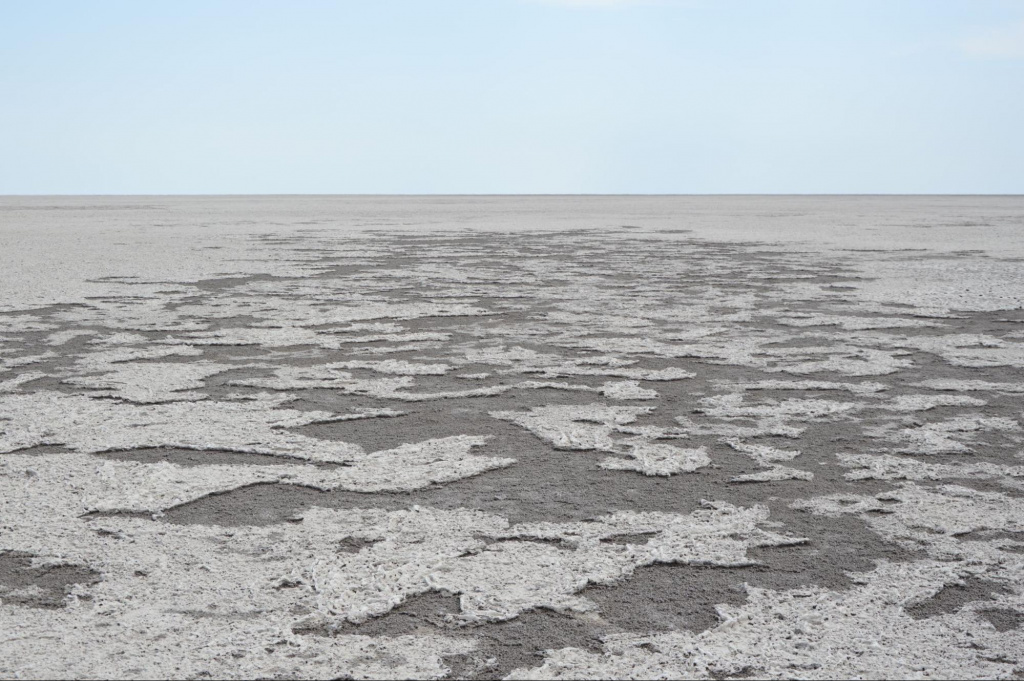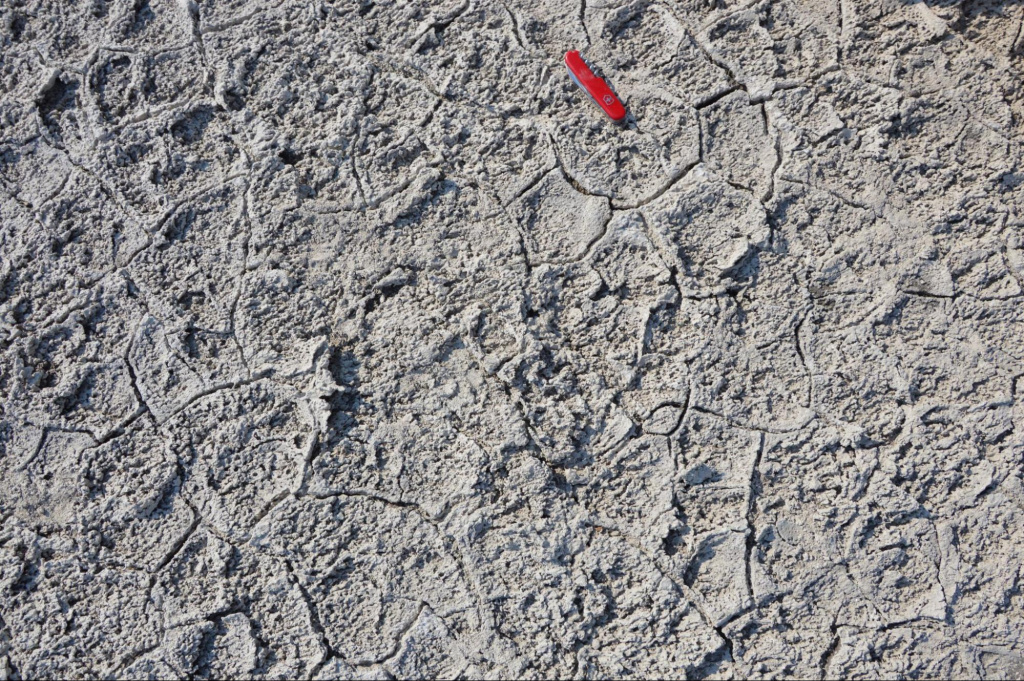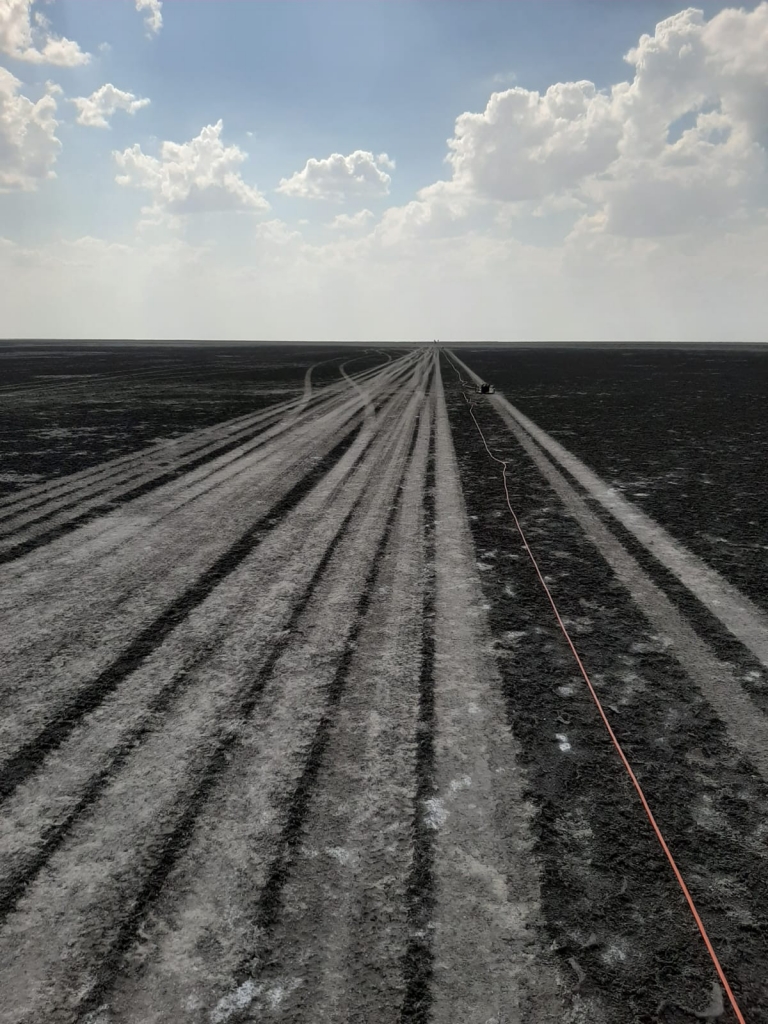Looking for clues about water circulation on Mars in the remote Makgadikgadi salt pans of Botswana
From 18 – 28 October 2021, researchers Erica Luzzi, Jacobs University (Germany) and Gene Schmidt, Università degli Studi Roma Tre (Italy) were funded by the Europlanet 2024 Research Infrastructure (RI) Transnational Access (TA) programme to visit the Makgadikgadi Salt Pans in Botsawana. The trip was led by Fulvio Franchi (Botswana International University of Science and Technology (BIUST)) who is responsible for the Botswana Planetary Field Analogue for Europlanet 2024 RI. In this guest post, Erica Luzzi reports on the field trip.
Our trip to Botswana through the Transnational Access offered by Europlanet has given us an incredible amount of surprises.

In addition to the precious data that we collected, we indeed had a life-changing experience visiting one of the most remote places on Earth. From the absolute silence in the desert, to the calm and breath-taking landscapes in the savanna, for some moments we really felt like being on another planet. Among many adventures (and misadventures), we accessed this extraordinary place on Earth, where a lot has been studied but still leaving space for many mysteries: the Makgadikgadi salt pans (Fig. 1). These dry lands occupy a broad area in the savanna of Botswana, and are characterized by a mixture of clays and sulfates with recurrent morphologies related to desiccation processes, such as mud cracks (Fig. 2).

This area once hosted an ancient lake which, due to paucity of water, turned into a playa, namely a dry lake bed. Such dry environments are hypothesized to have occurred also on Mars, where also the same types of minerals have been detected.

By studying an analog field site that we can touch with our hands as it is located on Earth, we can get a variety of insights that may help us to better investigate the processes that shaped Mars into the planet we observe today.
In the region of Arabia Terra, on Mars, light-toned layered deposits often associated with mounds have been widely described in literature, and among other interpretations they were also attributed to playa-like environments. The aim of our work was to analyse the subsurface of the Makgadikgadi salt pans, looking for faults where water could have circulated and then contributed to the hydro-geological cycle that led to the deposition of such deposits.
We performed an Electrical Resistivity Tomography survey in different areas of the pans (Fig. 3).
This particular type of geophysical technique consists of placing a number of electrodes in the ground, carefully spacing them at an equal distance, and then applying a known current. Each material responds to the current in a different way, and many variables can influence the resistivity (e.g. porosity, water content, mineralogy, etc.).
A preliminary version of the resulting images confirmed the occurrence of faults that will be better investigated after a robust post-processing of the data.
While we are still working on it, for now we can conclude that the survey has been successful and we look forward to linking our observations with the enigmatic deposits occurring in Arabia Terra, Mars.
Read more about Erica’s experiences on this thread on Twitter:
4) The team. Our group was composed by Gene Schmidt, first author of the future paper, Fulvio Franchi, prof at BIUST, Ame Thato Selepeng, prof at BIUST, Cabelo, an MSc student at BIUST, Rachel, driver at BIUST, and me. I thank them all for this extraordinary experience. 5/ pic.twitter.com/pabwcH8eC1
— Erica Luzzi (@erjaluz) November 2, 2021
Watch an interview with Erica (in Italian):
20-EPN2-121: Constraining the movement of groundwater and fluid expulsion within playa environments on Mars. This project has received funding from the European Union’s Horizon 2020 research and innovation programme under grant agreement No 871149.
Find out more about the Europlanet 2024 RI Transnational Access (TA) programme.

